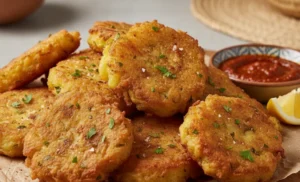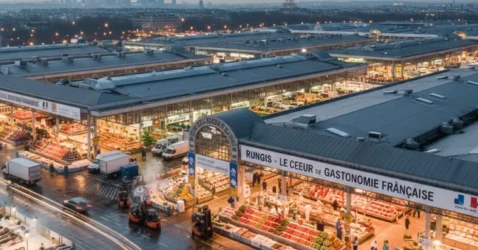A Global Gastronomic Tour: Exploring the World’s Largest Wet Markets
Wet markets have been under a spotlight, especially after the COVID-19 pandemic. While often associated with specific regions and health concerns, these bustling hubs are a global phenomenon. A wet market is essentially any market that sells fresh, perishable goods, from vibrant fruits and vegetables to fresh-cut meat and seafood. They are a cornerstone of food culture in countless cities, offering a direct link between producers and consumers. Far from being a niche concept, these markets are where millions of people source their daily meals, and they are a vital part of local economies and traditions.
Instead of focusing on the controversies, let’s take a culinary journey to explore some of the largest and most fascinating wet markets around the world. These are not just places to buy food; they are vibrant social centers that offer a unique glimpse into the heart of a city’s culture and daily life. From the sprawling stalls of Europe to the bustling hubs of Asia and the Americas, each market tells a story of local flavors, traditions, and community.
1. Porta Palazzo, Italy: A European Jewel
Kicking off our tour in Turin, Italy, we find Porta Palazzo, a market that is as grand in size as it is in its offerings. Spanning an impressive 50,000 square meters, it’s one of the largest open-air markets in Europe. While it’s particularly famous for its incredible selection of fresh fruits and vegetables, Porta Palazzo is a one-stop-shop for everything edible. You can wander through aisles piled high with seasonal produce, sample a variety of local cheeses, or pick up some fresh meat for dinner. The market also sells a beautiful assortment of flowers, adding a splash of color and fragrance to the already vibrant atmosphere. For anyone looking to experience authentic Italian food culture, a visit to Porta Palazzo is a must.
2. Otavalo Market, Ecuador: More Than Just Food
Our next stop takes us across the Atlantic to Ecuador, where the Otavalo Market offers a much broader experience than just fresh produce. While food is a significant part of this giant market, it is also a cultural hotspot known for its traditional crafts and textiles. Shoppers can find an astonishing variety of goods, including beautifully woven blankets, handmade clothes, and unique household items. The market is a testament to the rich indigenous culture of the region, and its vibrant stalls are filled with the works of local artisans. It’s a place where food, art, and community intertwine, making it a truly unique destination for travelers and locals alike.
3. Rungis, France: The Epicenter of French Cuisine
Just outside of Paris lies Rungis, a market that is less of a tourist attraction and more of a global food distribution powerhouse. It is widely considered the largest wholesale food market in the world, and for good reason. Rungis supplies restaurants, hotels, and grocery stores across Paris and beyond with an unparalleled variety of high-quality food. The market operates at a brisk pace, opening at midnight and closing in the early morning, and is typically only accessible to professionals and locals. While it may not be a casual shopping spot, its sheer size and the quality of its offerings—from fresh seafood and gourmet cheeses to perfectly aged meats—solidify its reputation as the epicenter of French gastronomy.
4. Central de Abasto Market, Mexico: A Feast for the Senses
In Mexico City, the Central de Abasto Market is a monumental experience. As one of the largest retail markets in the Americas, it’s a place where you can find virtually any type of food imaginable, all incredibly fresh. The market is a sensory overload of vibrant colors, rich aromas, and the sounds of bustling commerce. It serves as the primary distribution point for food in the Mexico City metropolitan area, and its sheer scale is awe-inspiring. Whether you are looking for exotic tropical fruits, a specific chili pepper for your recipe, or the freshest ingredients for a traditional Mexican dish, Central de Abasto has it all, making it a crucial part of the city’s culinary landscape.
5. Tsukiji Fish Market, Japan: The World’s Seafood Capital
No global food tour would be complete without a visit to Tokyo’s Tsukiji Fish Market. While the main wholesale operation has moved, the outer market remains a major draw and the legacy of its past lives on. Tsukiji is globally renowned for its extraordinary variety of fresh fish and seafood. But it’s not just a place to buy fish; it’s a hub for all things related to Japanese cuisine. You can find high-quality kitchen knives, an assortment of fresh vegetables, and an array of sauces and spices. The market’s reputation as the largest fish market on Earth makes it a pilgrimage site for chefs and seafood lovers who are in search of the highest quality ingredients.
6. Belo Horizonte, Brazil: A Culinary Gem
Brazil’s culinary scene is a vibrant one, and its largest wet market, Belo Horizonte, is a perfect reflection of that. With a staggering 400 stalls, this market is a treasure trove of Brazilian flavors. It caters to every dietary need, offering a wide array of fruits, spices, dairy products, and meats. The market is a kaleidoscope of local produce and traditional ingredients, making it an essential part of the city’s food culture. From unique regional fruits to a vast selection of spices, Belo Horizonte provides a comprehensive and authentic shopping experience that captures the essence of Brazilian cuisine.
7. Khari Baoli, India: Asia’s Spice Kingdom
Our final stop is in New Delhi, India, at Khari Baoli, a market that specializes in one thing: spices. While it may not sell the same variety of goods as the others, its focus on spices makes it a truly unique and significant destination. Located in Old Delhi, it is the largest wholesale spice market in all of Asia, a title that speaks volumes given the continent’s love for spices. A visit to Khari Baoli is an assault on the senses—the air is thick with the scent of countless spices, and the vibrant colors of chili, turmeric, and cumin create a stunning visual spectacle. It is a bustling, crowded, and utterly unforgettable experience that highlights the importance of spices in Indian and global cuisine.

















